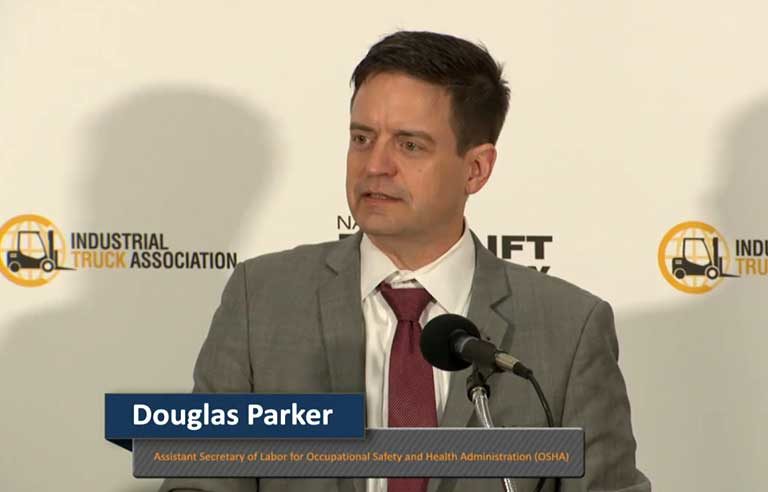National Forklift Safety Day brings calls for continued training, engagement

Photo: Industrial Truck Association
Washington — “We want all forklift operators going home after each shift without injury. That’s the ultimate objective.”
Chuck Pascarelli, chair of the Industrial Truck Association, made the remark June 13 during a National Forklift Safety Day event at the National Press Club.
Now in its 10th year, the event is organized by ITA and features safety experts and representatives from industry and government.
“Our approach to safety must be rigorous,” said Pasacarelli, who also serves as president, Americas, for the Hyster-Yale Group. “We have a changing and diverse workforce, so safety must be a priority. Operator training must be at the forefront to ensure a safe work environment. Not only is it the law that all employees are properly trained, it simply makes good business sense.”
ITA President Brian Feehan called attention to National Forklift Safety Day’s 10th anniversary – and the fact that it takes place during the National Safety Council’s National Safety Month – but said the industry “must also acknowledge that our work is far from done.”
Building safer work environments, Feehan says, will require continually engaging in dialogue, sharing knowledge and acting collectively to ensure worker safety. “National Forklift Safety Day serves as a reminder that we must continue to innovate, to educate and to advocate for the highest standards of safety,” he said.
OSHA administrator Doug Parker took part in the event. Parker said the agency has worked to grow its impact by focusing on relationships with employers, including ITA’s members. “We are currently engaged in an unprecedented level of employer engagement on critical issues related to how we can advance health and safety culture,” he said.
“We still have work to do in both training and making sure that our equipment is well designed to minimize the impact and that they’re used in the context of a broader health and safety management system where people are thinking about culture, where safety and health as a core value is influencing how work is done so people aren’t finding themselves in vulnerable situations.”
Post a comment to this article
Safety+Health welcomes comments that promote respectful dialogue. Please stay on topic. Comments that contain personal attacks, profanity or abusive language – or those aggressively promoting products or services – will be removed. We reserve the right to determine which comments violate our comment policy. (Anonymous comments are welcome; merely skip the “name” field in the comment box. An email address is required but will not be included with your comment.)

